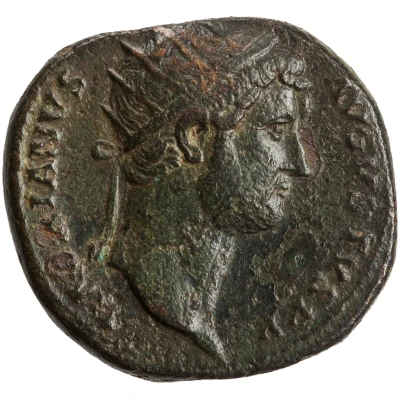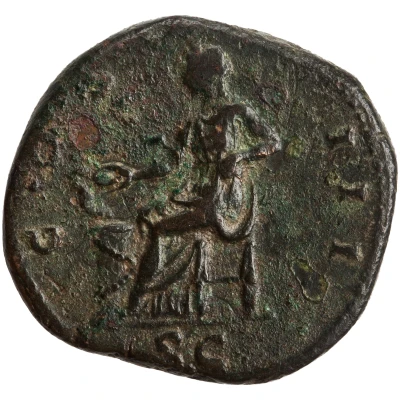Dupondius - Hadrian // COS III; Salus and Asclepius
128 year| Orichalcum | 12.5 g | 27 mm |
| Issuer | Rome › Roman Empire (27 BC - 395 AD) |
|---|---|
| Emperor | Hadrian (Publius Aelius Hadrianus) (117-138) |
| Type | Standard circulation coin |
| Year | 128 |
| Value | 1 Dupondius = ⅛ Denarius |
| Currency | Denarius, Reform of Augustus (27 BC – AD 215) |
| Composition | Orichalcum |
| Weight | 12.5 g |
| Diameter | 27 mm |
| Shape | Round (irregular) |
| Technique | Hammered |
| Demonetized | Yes |
| Updated | 2024-10-06 |
| Numista | N#257217 |
|---|---|
| Rarity index | 100% |
Reverse
Salus standing right, resting on shoulder of young Aesculapius, standing facing, holding snake entwined staff; to right, figure on column.
Script: Latin
Lettering: // COS III
Translation:
Consul Tertium.
Consul for the third time.
Comment
Source: Online Coins of the Roman Empire (OCRE)Interesting fact
The Dupondius coin featuring Hadrian (// COS III; Salus and Asclepius) from Rome, Roman Empire (27 BC - 395 AD) made of Orichalcum weighing 12.5g is interesting because it showcases the Roman Empire's advanced metallurgical techniques. Orichalcum, also known as "golden bronze," was a prized alloy of copper, zinc, and sometimes small amounts of gold or silver. It was highly valued for its durability, corrosion resistance, and golden-like appearance, making it an ideal material for coins. The fact that this coin was minted using Orichalcum speaks to the Roman Empire's sophistication in metallurgy and their ability to produce high-quality currency.

